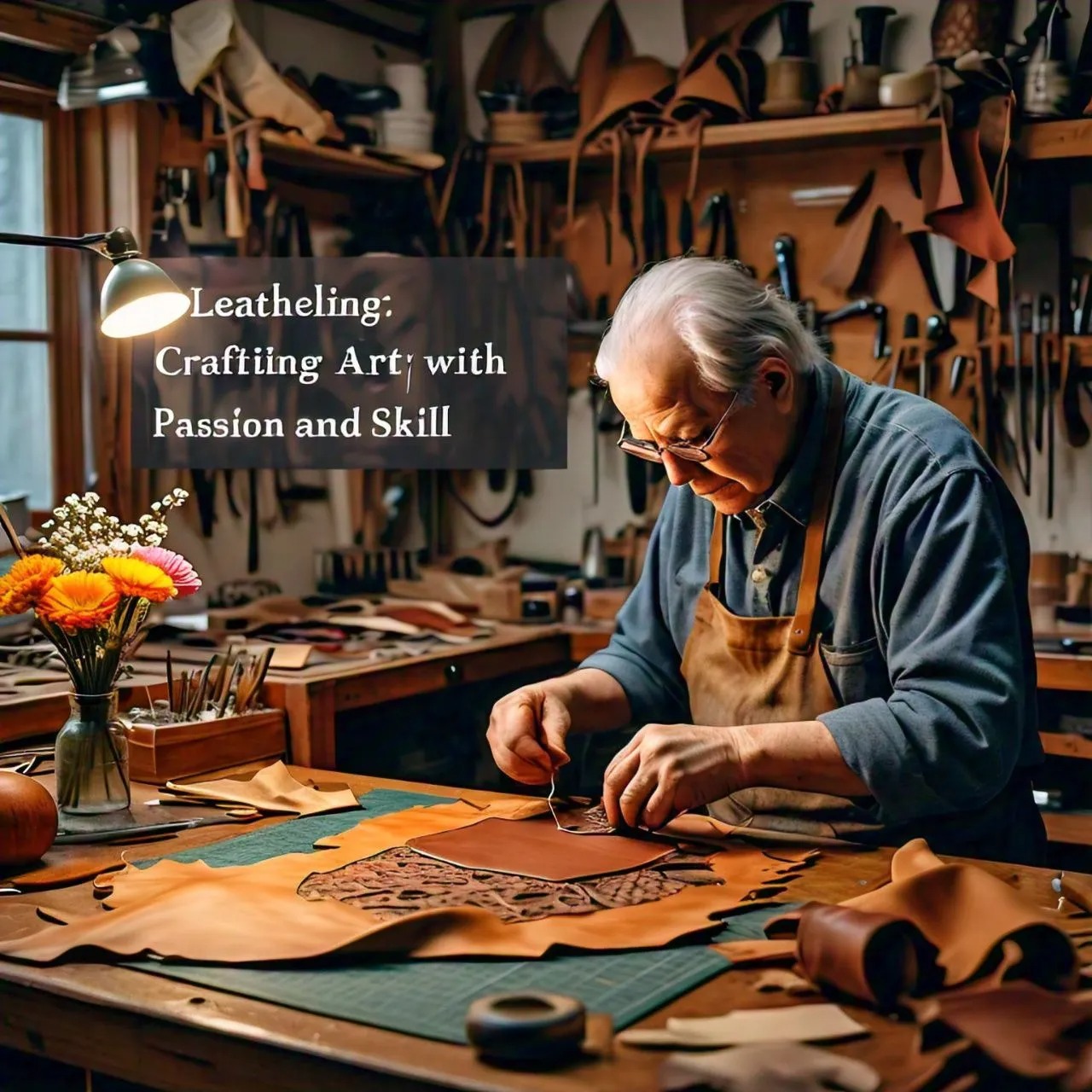Leatheling goes beyond being a mere craft; it is a centuries-old practice that intertwines art with expertise and produces work that can be epic in terms of design or simply functional. Having its origins in centuries of craftsmanship, the art of leatheling has developed into something, yet it still represents the creative force that humanity possesses alongside their devotion and emotional attachment. Such leatherworkers who practice this trade belong to a wider world which respects the origins of this material but is also keen to expand its offerings.
The History of Leatheling
Like most other folk crafts, Leatheling also possesses a considerable amount of history. It is recorded that leather materials were already used in ancient civilizations around the world as clothing, housing and protection, which suggests that it has been around for thousands of years. Following that trend, leather making activities shifted from mere utility to artisanship, and to compliment that new branch of art, craftsmen invented ornate and functioning leather pieces such as armor, shoes, bags or saddles.
During the Middle Ages, leatherworking developed in guilds and self-governing associations of masters and their apprentices engaged in a similar trade or craft and this practice continues today. Craftsmen appreciated the leather for its strength and quality, but more importantly because it was also easy to carve and related to the artistic side of construction. Patterns were tooled, embossed, and engraved into the leather, thus it became possible to combine art with practical purposes. This trend of energy and aesthetics joined together is also present in contemporary leatheling.
The Artistry Behind Leatheling
The closely collaborating skills of crafting leather items distinguish this profession from the rest because each creation has art added to it. Though mechanical production made its way into the leathermaking, professional leathermakers reproduce one of a kind quality items using purely handcrafting methods. From the choice of the leather type to the final stitching performed by hand, all the procedures need to be carried out meticulously and require serious comprehension of the material.
One of the most interesting features of leather working is the possibility of making different things, especially the way a person wants them. From the lavishly detailed embossments of a leather wallet to the fantastic design of a handmade leather belt, many, if not all, of the finished products, can be made according to the client’s or creator’s design. All of this provides the possibility of limitless imagination, which is the very reason why leatherwork evolved into an art respected for its complexity and ability.
They have experienced people in the construction of leatherworking basics, and, thus seize the processes of carving, tooling, and dyeing, and sewing, too, as everyone usually masters many of such techniques. Those are the skills that each single leathergood possesses, making the piece much more valuable than just an ordinary item. Leatheworc is not only about the structure of the designed piece but also about the raw leather that has undergone these skills and has been processed properly and turned into something good.
The Skill and Passion of Leatherworkers
Becoming a master in the craft of leatheling is no easy task. One needs a lot of patience and commitment as its not easy to master leather, cutting, shaping or stitching tools. The Working of the leather needs commitment and respect towards the material itself but also the skill to turn it into an art.
There is always an underlying reason why most leathermakers create what they create in the first place and it always relates back to their passion. Creating something from scratch, holds satisfaction as a whole which pushes many artisans towards perfection. Completing a project is what soports their passion — whether it’s a melee of a dotted purse or a sober pair of boots someone sees coming together is what holds this motivation in our craft.
Another reason why leatherwork is popular is the touch aspect involved with it. From the leather in the making to the pounding and cutting sounds of machineries, leathermakers and laborers become one with their craft. They put in so much effort that there exists a pride within by simply looking at the piece they have made.
The Future of Leatheling
With every passing day, and the world moving towards being sustainable and ethical, more and more people are embracing the technology of leatheling. People are harking back to impeccable craftsmanship, timeless artifacts, and a more personal touch. Leather production methods, when done frictionlessly and with respect for the material, fit in with the principles. There has been a change in perception recently, and this has once again made people’s attention turn to the old crafts of leather making, but this time when many craftsmen switched to environmentally friendly technologies of leather making such as vegetable tanning leather and leather making with minimization of waste.
Leatheling is, of course an age-old craft but that is not the end of its scope. Modern-day leather craftsmen combine traditional and modern styles, allowing their work not only to pay tribute to the past, but also to look forward. This skill, in combination with passion, and sustainability integration guarantees preservation and growth of the craft for decades to come.
Conclusion
Leatheling is the fusion of design and form that requires consummate skill, love& devotion, and most importantly reverence for the art and the craft itself. In these complex times leatherworkers forge new leather who endure the trials and tribulations of the craft and create new masterpieces of high artistry. And while we progress into the future, this eternal craft still stands to remind society about the ingenuity and skill of the people.

